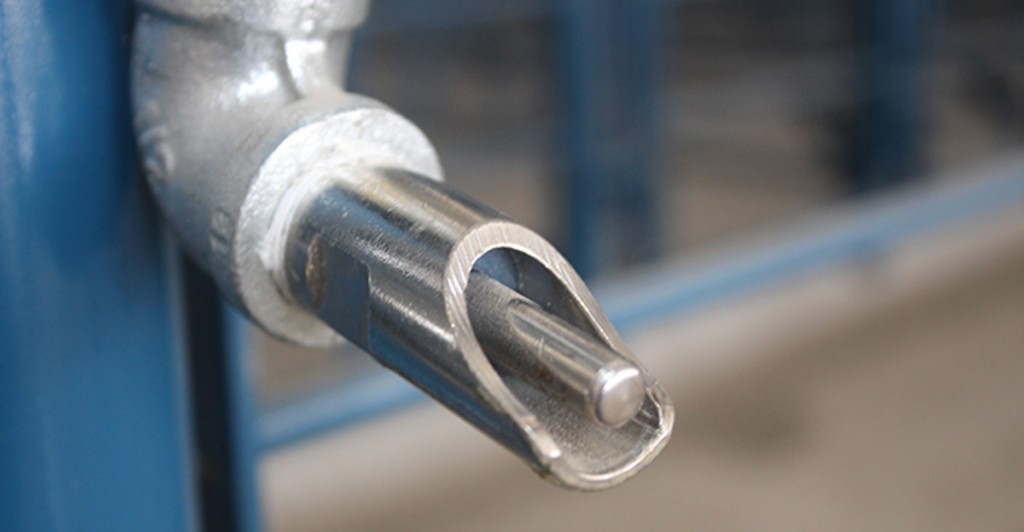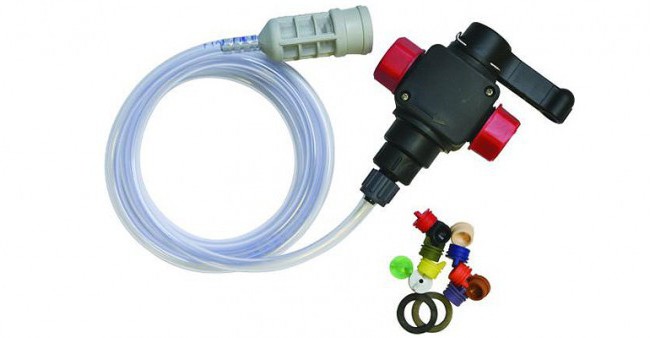
After animals are depopulated, the attitude on the farm shifts to preparing for the next round of animals. This traditionally includes cleaning the facility from top to bottom and applying a disinfectant. Any routine maintenance is performed, and those nagging issues that may have been noticed, but there wasn’t enough time for during production to fix, finally get the attention they need. One part of the operation that is often overlooked, however, is the water line. Sure, any stuck or leaky drinker nipples may be serviced or replaced, but by and large drinker lines are shut off and forgotten about until the pigs come back into the barn.

During this time the water line, while appearing benign on the outside, maybe even clean if the cleaning crew hit it with the pressure washer and disinfectant, is very much alive. Any leftover solids from the previous turn are settling inside the line from lack of flow. The biology present from the environment is multiplying, and any build up inside the lines is compacting into a concrete like substance. For all intents and purposes, the water line becomes an incubator while the pigs are out of the barn, especially when the barn is heated back up for repopulation. This, in turn, creates an interesting issue when the freshly weaned pigs take a drink from the line. The first drink a young pig gets is the worst drink it will get. It has the most biology, it is the warmest, oldest, and traditionally worst smelling/tasting water it will be exposed to in its life.
This is where terminal line disinfection comes in. Terminal line cleaning and disinfection occurs when the pigs are removed from the facility and line disinfectants can be applied to remove solids and eliminate any biology that is harbored in the lines. Aside from the obvious removal of pathogens, terminal line disinfection also improves the operation of the drinkers and increases the volume the line carries. The volume increase is especially important as we try to grow larger and larger finishing hogs with the same drinkers and drinker lines designed for market weight hogs 20% smaller.
The available data reflects this as well. Terminal line cleaning alone improved production at the research site as follows:

6-week wean-nursery trial – Lines cleaned and disinfected with Peraside (Peracetic Acid Disinfectant, Neogen Corp.)
Terminal line disinfection in this research trial was achieved with a 3% solution of disinfectant administered into the lines with a sump pump upon depopulation. The solution sat in the lines overnight and was flushed the next morning with fresh water. All the nipple drinkers were triggered to ensure proper function and the pigs were placed. The product can also be injected with a mixing station like the Dosatron Venturi Pump (DSA-Venturi) with the yellow metering tip installed.

This is similar to soap injector on a power washer and can be used in place of the normal medicator. The producer places the tube directly into the terminal line disinfectant and fills the lines and triggers the drinkers to ensure the product flows through all the parts of the drinker system. After allowing the solution to sit overnight, the producer then flushes the lines and triggers the drinkers again.
With a little effort, large production changes can be made, and the pigs no longer get the worst drink as their first drink.
Jesse McCoy, CWS, Business Unit Specialist, Water Treatment, Neogen Corp.












 Україна
Україна Méjico
Méjico


